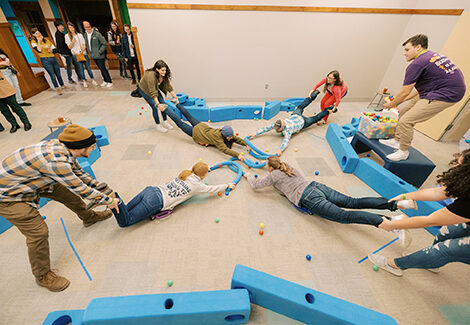At the Children’s Museum of South Dakota, we encourage children to lead the way in their play. Following the child’s lead can be wonderfully unpredictable and full of teachable moments. So how does one follow the lead of a child in their play? By honoring the child and their instinct to wonder, explore, and discover. Children are competent and capable of constructing their own learning and adults can support this by allowing them opportunities to do so.
Play is a powerful tool in learning that children innately know how to use.
Here are some examples of how you can create experiences and environments where children can lead the way in both their play and learning.
Offer Choices: When children are offered choices in their play they can explore their own interests, follow through on their ideas, and seek answers to their own questions. Set up spaces where children can easily assess a variety of things that interest them, then encourage them to choose what they want to play with.
Watch Closely: There are a few key things to look closely at when watching children play. What choices are they making? What are they talking about? How are they engaging with the world around them? These all give insight into what you can plan for activities and outings. If your child keeps talking about dinosaurs, come visit Mama T. Rex at the Children’s Museum of South Dakota. Experiences children find intriguing heighten their engagement and potential for a learning.

Play Along: It delights children when their beloved adults want to play along with them. When children are leading the way be prepared to switch paths as the child’s interest may evolve and change. It helps to keep your attention on the children’s involvement and how they are learning, rather than the activity itself.
Listen Carefully: Talking with children is one of the best ways to better understand where their interests are. Take the opportunity to ask children what they want to learn about. Questions such as: What do you notice? or What do you wonder? encourage children to further explain their curiosities.
Play is a powerful tool in learning that children innately know how to use. Offering choices, watching closely, listening carefully, and playing along help empower children to lead the way in their play and learning. These simple acts support children in valuing their own interests, trusting their instincts and confidence to make their own choices. And you might notice that you learn something, too!




